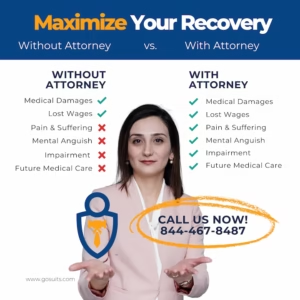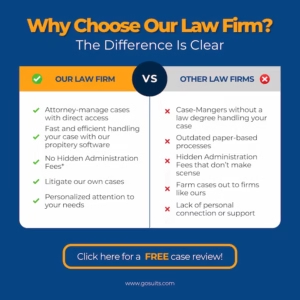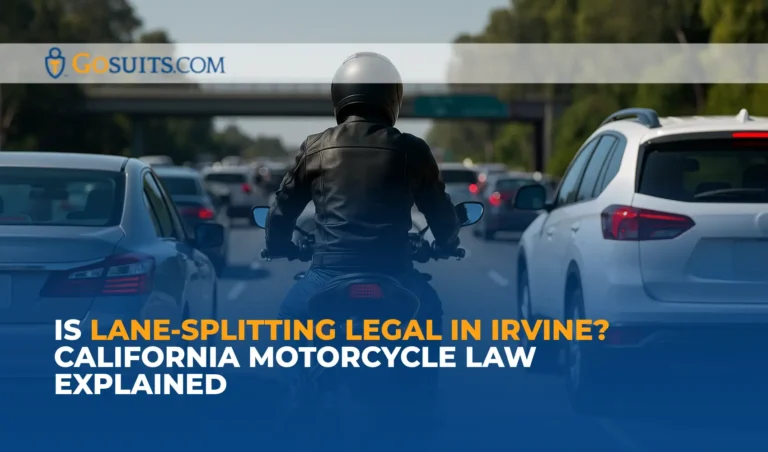Motorcyclists face a unique set of challenges when dealing with traffic in Irvine. Lane congestion on major routes like I-5 and I-405 often leads riders to consider lane-splitting, a practice that remains widely misunderstood. While the maneuver can reduce commute time, questions often arise around its legality, its safety, and how it impacts liability in the event of a collision.
Clarifying the Concept of Lane-Splitting
Lane-splitting is defined as the act of a motorcycle moving between lanes of slow or stopped traffic, typically on multi-lane roads or freeways. It is distinct from lane sharing, which involves two motorcycles riding side by side, and from filtering, which generally occurs at traffic signals. In lane-splitting scenarios, the motorcyclist rides between vehicles in adjacent lanes, usually to avoid gridlock and maintain forward motion.
Although the practice may seem risky to other drivers, many riders argue that it enhances safety by reducing the chance of rear-end collisions during stop-and-go conditions. Still, the legal status of lane-splitting and how it plays out in civil injury cases depends not only on state law but also on the circumstances surrounding each event.
California’s Position on Lane-Splitting
California is currently the only U.S. state where lane-splitting is explicitly permitted. This legal status stems from Assembly Bill 51, which was passed in 2016 and authorized the California Highway Patrol (CHP) to develop educational safety guidelines for motorcyclists and drivers.
While the law permits lane-splitting, it does not create a blanket protection against liability. The legality of the maneuver does not override the obligation to operate any vehicle with reasonable care. If a collision occurs while a motorcycle is lane-splitting, liability may be assigned to one or more parties depending on how the vehicles were being operated at the time.
Importantly, CHP guidelines do not carry the force of law, but they are frequently cited in traffic reports and legal claims involving motorcycles. These recommendations are considered by courts, insurers, and traffic investigators when evaluating whether a rider was acting responsibly.
Lane-Splitting Conditions in Irvine
Traffic in Irvine reflects a blend of urban and suburban design, with many heavily trafficked corridors connecting residential areas, universities, and business districts. Freeways such as the 405 and arterial streets like Culver Drive and Jamboree Road are known for high traffic volumes, especially during commuting hours.
In this environment, lane-splitting becomes a common tactic for motorcyclists attempting to avoid extended stops or tightly packed traffic lanes. However, the presence of merging lanes, distracted drivers, or inconsistent signaling can quickly turn a routine maneuver into a hazardous situation.
Law enforcement agencies in Irvine may evaluate lane-splitting incidents using local crash data, video evidence, and witness reports. While the act itself is permitted, the way it is carried out—speed, spacing, lane position—can significantly influence how fault is determined in a crash.

Reviewing CHP Lane-Splitting Guidelines
The California Highway Patrol has developed a set of safety tips for motorcyclists who choose to lane-split. These suggestions include:
- Keeping the speed difference between the motorcycle and surrounding vehicles to a minimum, ideally no more than 10 miles per hour
- Avoiding lane-splitting near large vehicles such as trucks and buses where visibility is reduced
- Refraining from weaving or making unpredictable movements between lanes
- Staying in the space between the two leftmost lanes on multi-lane freeways, where drivers are more likely to expect motorcycle activity
- Exercising caution in congested traffic zones or areas with frequent lane changes
Legal Considerations After a Lane-Splitting Collision
When a crash occurs during lane-splitting, legal analysis focuses on the specific facts of the incident. A key factor is whether the motorcyclist was acting within reasonable bounds, maintaining a safe speed, and exercising awareness of surrounding vehicles. At the same time, the conduct of the other driver is also evaluated, including lane changes, signaling habits, and overall attention to traffic conditions.
California follows a comparative negligence framework. This means that more than one party may be assigned a percentage of fault based on their actions leading up to the collision. In many cases, a motorcyclist who was lane-splitting legally and cautiously may still face an argument that they contributed to the crash. These determinations can affect the outcome of any resulting civil claim for damages.
Understanding how to interpret police reports, gather witness testimony, and work with qualified professionals to reconstruct the events is essential in pursuing any type of recovery through legal channels. The process often requires a detailed review of vehicle positions, traffic flow, environmental conditions, and photographic or video evidence from the scene.
Unique Traffic Factors in Irvine Motorcycle Collisions
Motorcyclists in Irvine navigate through a distinctive combination of road types, from multi-lane freeways to suburban streets lined with residential homes and commercial centers. These variables influence both how accidents happen and how they are evaluated later on. Some of the Irvine-specific factors that may affect motorcycle injury claims include:
- Proximity to high-traffic university zones like UC Irvine, where pedestrian activity and student drivers increase unpredictability
- Busy arterial roads like Alton Parkway and Jeffrey Road, which see frequent merging and lane changes during rush hours
- High-density retail zones and intersections near shopping centers, where stop-and-go traffic can create added risk
- Construction zones and temporary traffic redirection, which reduce lane clarity and reaction time
- Limited motorcycle-only lanes, which can lead to closer interaction between riders and larger vehicles

Why Support From a Gosuits Motorcycle Accident Lawyer Matters in Lane-Splitting Injury Cases
The aftermath of a traffic incident can be disorienting, particularly when it involves a motorcycle. Beyond immediate physical injuries, the financial and emotional consequences may span weeks or months. Determining who was responsible is not always straightforward, especially when the incident involved a maneuver as context-specific as lane-splitting.
Because California law does not assign automatic fault in these scenarios, each case must be evaluated individually. Having proper support during this time can help clarify how traffic behavior, speed, vehicle positioning, and road conditions contributed to the incident. The process of reviewing these elements, securing necessary records, and presenting them in a coherent manner can influence the strength of a legal claim.
At Gosuits, we have worked with motorcyclists across California who faced complex legal challenges after lane-splitting collisions. We understand how CHP guidelines are applied, how comparative fault can impact your recovery, and how to push back when insurers try to frame legal lane-splitting as reckless behavior. Our attorneys are deeply familiar with Irvine’s traffic conditions and have experience gathering local crash data, video footage, and witness testimony to reconstruct what actually happened, not just what others assumed.
We do not treat these cases like routine accidents, because they are not. Every detail matters, from how fast you were moving to where you positioned your bike on the road. Our legal team investigates those specifics from day one and builds your case accordingly, using advanced tools to visualize the event and explain it clearly to insurers or a jury.
If you were injured while lane-splitting in Irvine, do not leave your recovery to chance or to misunderstanding. Contact Gosuits for a free consultation. We will take the time to understand your situation, apply the right legal strategy, and help you move forward with clarity and support from people who know how to handle these cases correctly.






